MANAGEMENT APPROACH
The forest management planning approach discussed in any Forest Management Plan is important. It attempts to integrate the whole range of management activities to be carried out to achieve the given economic, ecological and socio-economic objectives. The basic planning steps involved are (Sabah Forestry Department, 1997):
- Compilation and Interpretation of historical data
- Assessment of basic infrastructure and boundaries
- Preparation of maps
- Wildlife surveys
- Managerial analysis and planning
- Cost projection
- Formulation of the Forest Restoration Plan
I) Rehabilitation
Where areas are badly degraded, open and very poorly stocked with timber trees, rehabilitation work will be carried out on degraded logged-over and under stocked forest areas by line planting with commercially valuable tree species. This is to ensure that the bare areas are rapidly covered to prevent soil erosion and infestation by wild species. It is also meant to replace timber species lost and enhance the productivity of the area. It is estimated that the total area to be rehabilitated is 500 hectare or 4% of Timimbang FR.
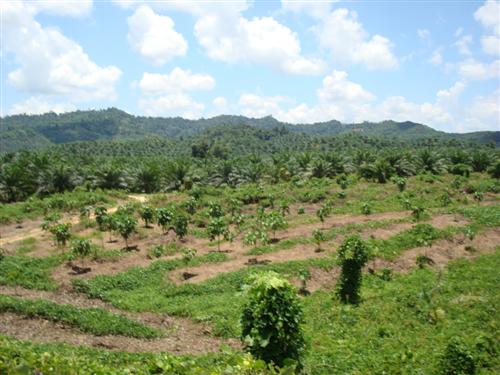
Rehabilitated area
| RESTORATION IN TIMIMBANG BOTITIAN SFM PROJECT | ||
| YEAR | COMPARTMENT | RESTORATION AREA (HA) |
| 2008 | 52 | 69 |
| 2010 | Botitian FR | 4 |
| 2013 | 7,11,13,15 | 60 |
| 2015 | 17,19,20,22,24 | 90 |
II) Enrichment Planting
All logged-areas that are poorly stocked with natural regeneration are estimated to be around 500 ha or 4 % of Timimbang FR. In this area, enrichment planting will be carried out with preferred species, which are generally found in the vicinity of the Timimbang FR. Wyatt-Smith (1963) has highlighted the some points for considering enrichment planting are to focus on new seedlings, which will be planted along the cleared lines under the canopy of the residual stands with a recommended planting distance. Some of the planting will also be carried out on areas of large gaps or openings and degraded areas such as skid trails, road and log yard.
III) Silvicultural Tending
Silviculture tending operations will be concentrated on the remaining areas of Timimbang FR, which is 10,465 ha (92 %). The purpose of the treatment is to improve the available growing stock through releasing the existing natural regeneration and potential crop trees from their direct competitors such as climbers, climbing bamboo (Wadan) and other pioneer vegetation. The silviculture tending requires careful training and supervision; otherwise it would create further damage to the forest ecosystem. According to Weidelt (1994), the following stand components that should be removed during Silvicuture treatment are:
- All trees which interfere directly with the potential crop trees (PCT);
- Trees which are defective or damaged;
- Trees which are heavily shaded, preventing natural regeneration growth; and
- Climbers.
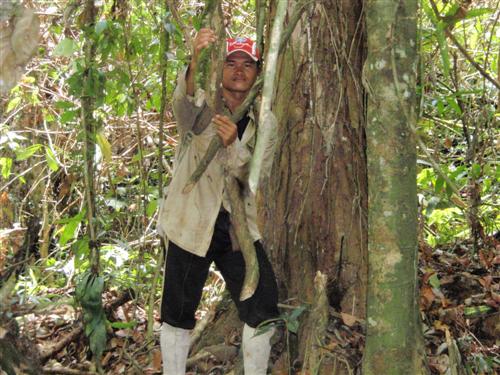
A staff is tending a tree
The overall total area treated from 2008 to 2013 by contractor (Fresh Mumus Enterprise) is 10,062 hectares as shown in table below : Year 2008
2009
2010
2011
2012
2013
2014 Total
Target (ha)
1000
1000
1000
1000
1000
1000
1000 7000
Additional area (Ha)
732
433
1230
780
887
800 4862
Achieved (Ha)
1000
1732
1433
2230
1780
1887
1800 10,862
Click to view maps
Silviculture Area
Restoration & Silviculture Treatment
Photo Gallery
| Rehabilitation | Silvicultural Tending | |
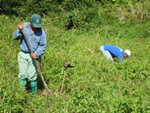 |
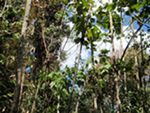 Silviculture treatment in Compartment 12 |
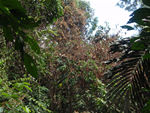 more photos......... |